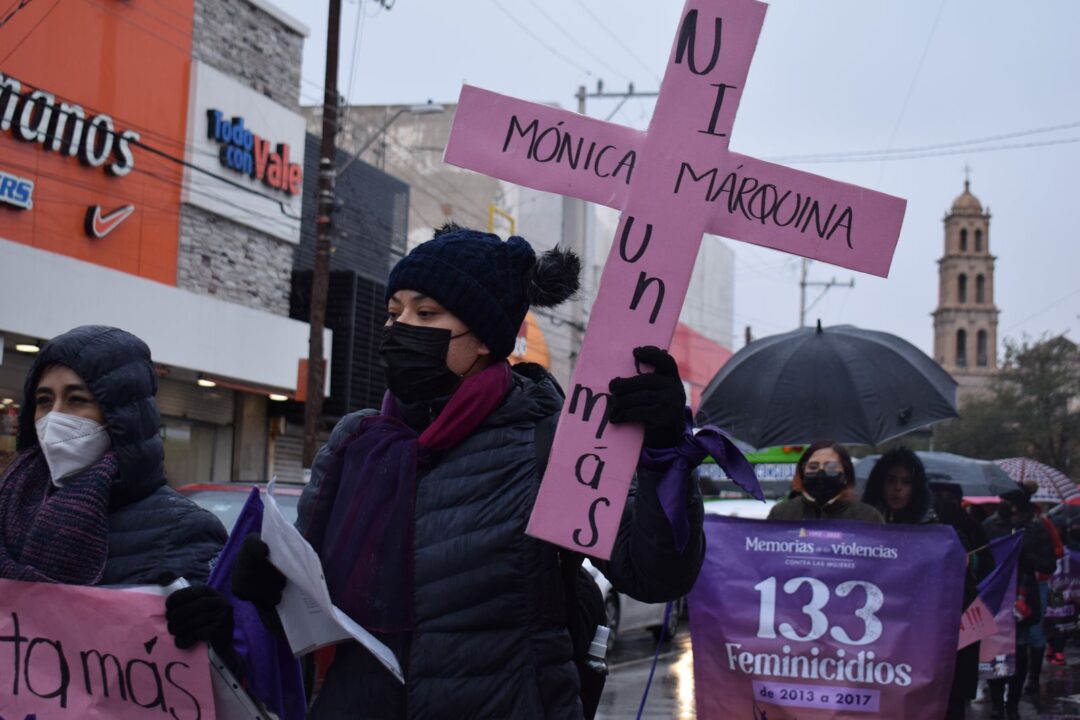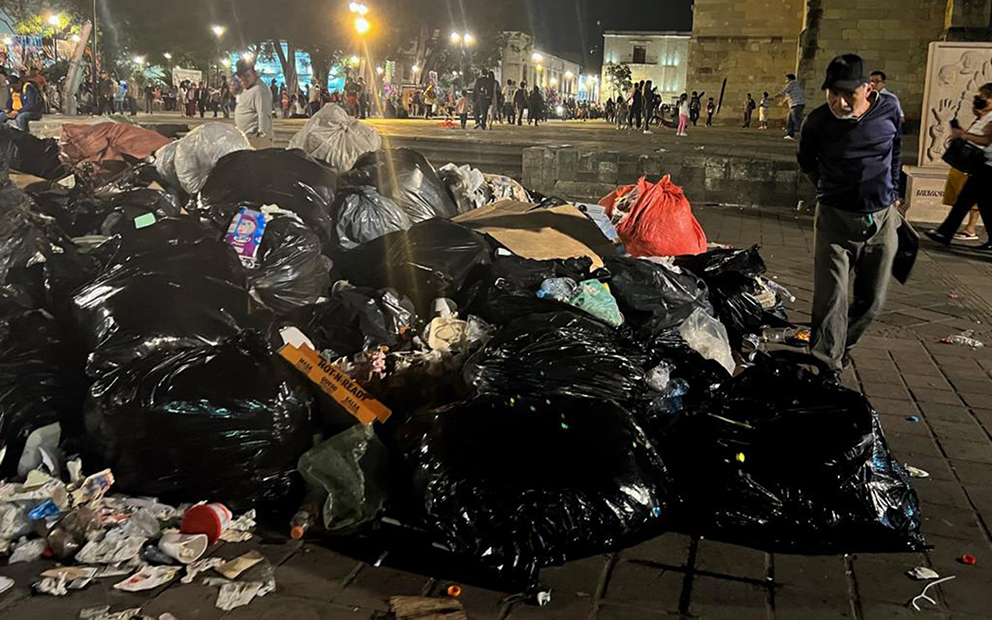Food prices rise sharply in Mexico
7 febrero, 2022

For comsumers, 2022 started with a pronounced uphill battle: money to buy foodstuffs only goes half as far, as inflation spikes worldwide as a consequence of the Covid 19 pandemic. Inflation is expected to become one of the biggest challenges for Latin American governments.
Text and Photos by Duilio Rodríguez, originally published January 23, 2022.
Translated by Dawn Marie Paley for Pie de Página in English.
MÉXICO CITY – Just after noon, the Medellín market in the Roma neighborhood as well as a popular market in the Portales neighbourhood were almost completely empty. Same goes for the market on wheels that is set up on Tuesdays on Ometusco street in Condesa. There are few buyers, and those who are there walk from vendor to vendor in an effort to find items that are on sale.
One of them is Alicia Ramírez, who is used to going to all the chicken vendors in the public market in the Portales neighborhood. She does so in order to find the lowest prices, so that she can feed the eight people who live in her house.
Alicia estimates that she spends an average of $300 pesos (US$15) a day to feed her family. Chicken breasts in the market are advertised at $120 (US$6) or $130 (US$6.50). She explains that the huge price increases have meant that it is harder to figure out where to buy food to bring to her family.
“Chicken was $90 (US$4.50) [a kilogram] a week ago, and now it’s up to $120 (US$6), meat is even pricier, limes are super expensive, I used to get them for $25 (US$1.25) [a kilogram], now they are $60 or $70 pesos (US$3 or US$3.50), at that price we avoid eating them, and when we don’t have enough we eat more vegetables for our main dish,” she said. “I have to look and look because I also have three cats and three dogs to feed,” she said optimistically, with a smile.
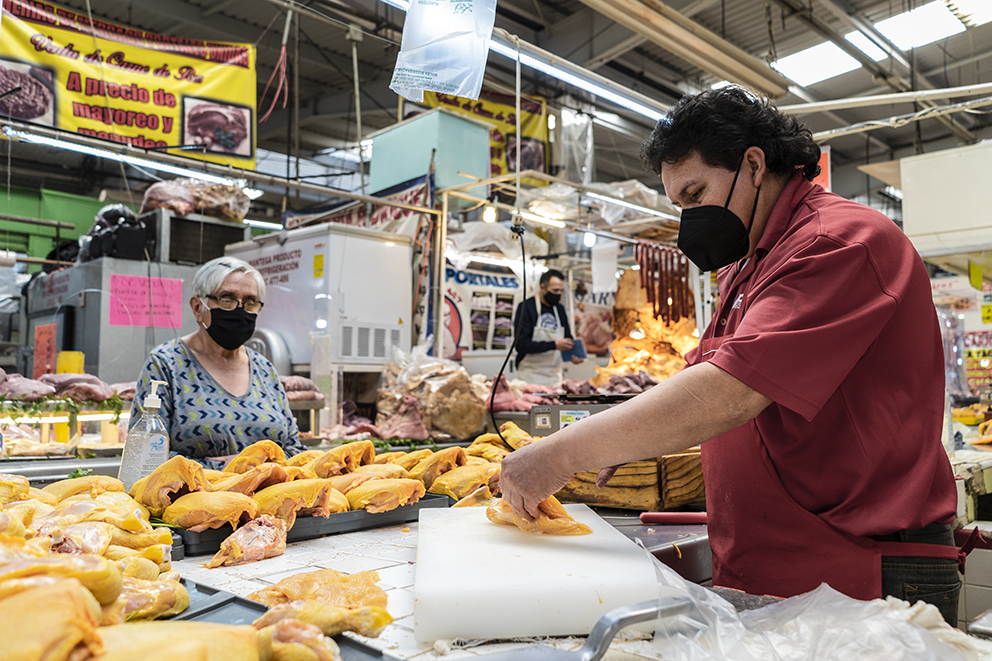
The price of the pandemic
Alicia Ramírez may not know this, but the complications she’s experiencing in bringing food home is part of a global problem, yet another outcome of the extensive Covid-19 pandemic.
Since November 2021, inflation has been unstoppable worldwide, and in 2022 it is projected to be among the key challenges of governments in Latin America, which is the world’s most unequal region and the most impacted by the pandemic.
Brasil and México, the two largest economies in the region, ended 2021 with inter-annual inflation of 10.19 percent and 7.37 per cent respectively. In the case of México, that’s the highest rate of inflation registered in two decades.
And 2022 didn’t start any better: in just a few weeks, the prices of some products that are part of the basic grocery needs of families have increased up to 200 percent. That’s the case for limes, for example.
“They ask me for the spotted or wrinkled ones”
Since the end of December, the price of a kilogram of limes has increased from 40 to 60 pesos (US$2 to US$3 per kilogram), in some markets of México City it has gone as high as 90 pesos (US$4.50).
According to the National Council of Lime Producers, the increase is related to two factors: a nearly 700 percent increase in the price of fertilizers, and the lack of fuel and higher fuel prices.
Rosa Fuentes, who sells fruit and vegetables in the Medellín market, said prices have always increased, but not by as much as they have this time.
I have clients who have asked me to save them what we’re going to remove from the stand, or that are damaged, bananas and fruits that are already mature, or that have spots or wrinkles on them. My clients used to buy a kilo of limes, now they buy just one or two, or if they have money, half a kilo.
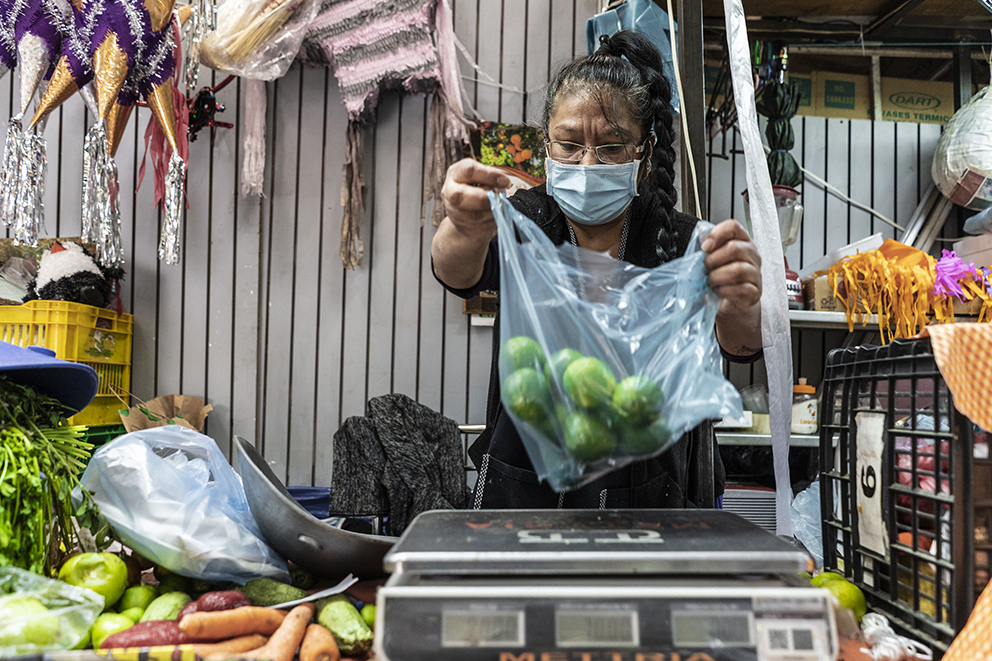
The vendors in the market explain that there’s nothing they can do. When they go to the places where they stock up, like the Abastos market or the abattoires, the fruit, vegetables and meat are more expensive.
At the wholesalers, the vendors are told that there isn’t enough product due to bad weather, rises in fuel prices, or the seasonality of each fruit and vegetable. Only some seasonal products like mandarin oranges are cheaper.
Paola Chávez has been selling fruits in the Melchor Ocampo market for more than 15 years. She said the increase in the prices of the items she sells is frequent, and that sometimes they increase from one day to the next.
The distributors always seek an excuse to raise the prices, they say it’s because of shortages, or whatever else. But the producer working in the fields doesn’t get paid more, we should put ourselves in the shoes of campesinos.
Paola Chávez
Being informed (and juggling)
On December 20th, Ricardo Sheffield, head of the Consumer Protection Agency (PROFECO), began presenting a “who’s who” of prices for a family’s basic grocery needs president’s morning conferences. Through these presentations, Sheffield is attempting to help consumers make choices that will help them avoid excessively high prices.
According to PROFECO data, the products that rose the most in price over a year to January 21, 2022 are: limes with seeds, 271.9 percent; white onions, 112.8 percent; Hass avocados, 78.1 percent; Valencia oranges, 34.5 percent; beef sides, 25.4 percent; and whole chickens, 22.3 percent.
The products for which prices have fallen are: Saladette tomatoes, down 25.7 percent; pinto beans; down 23.8 percent; and cane sugar, down 7.8 percent.
At this link, you can find the prices of basic foodstuffs to January 21, 2022. But having information about prices isn’t enough in this uphill January.
Beatriz Reyes is a domestic worker, and she buys food for the people she works for. I asked her if she’d heard Ricardo Sheffield from PROFECO in the morning press conference saying how of 21 products considered basic necessities had dropped two percent in central México. She laughed heartily and responded: “No, ha ha! That never happens! It’s the opposite, everything is going up. I used to buy food with $500 pesos (US$25), now $1000 (US$50) is barely enough.”
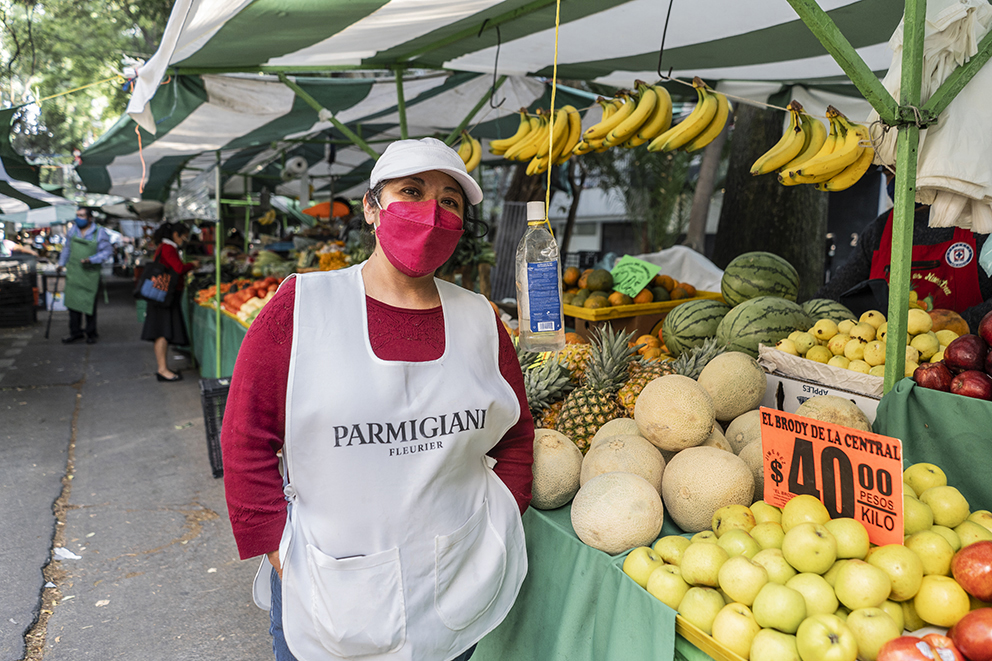
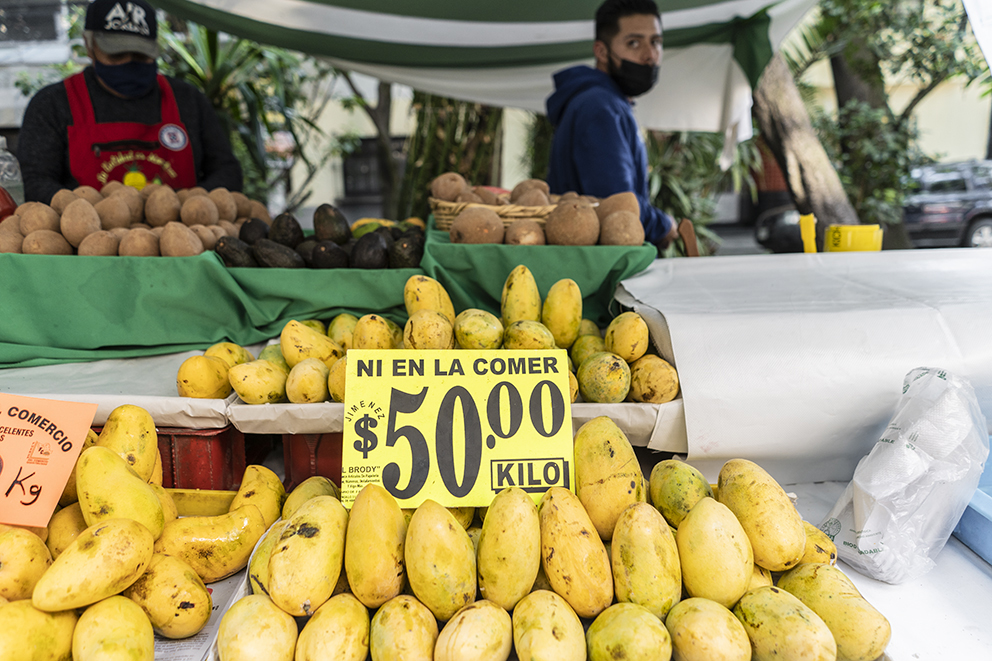
Duilio Rodriguez is a photographer and editor interested in art, cinema, architecture, literature, rock climbing and spots in general (except soccer). duiliorodriguez.com.
Click here to sign up for Pie de Página’s bi-weekly English newsletter.
Ayúdanos a sostener un periodismo ético y responsable, que sirva para construir mejores sociedades. Patrocina una historia y forma parte de nuestra comunidad.
Dona

